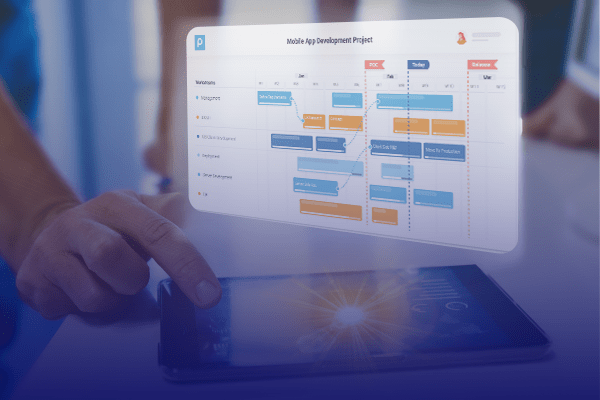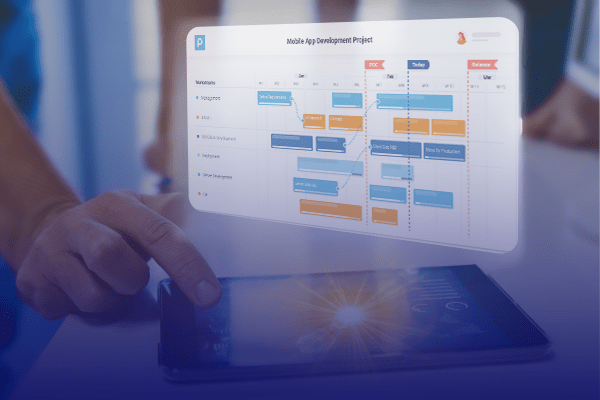Sunny with a Chance of Deliverables: How to Improve Your Project Resource Forecasting

Forecasting isn’t just for weathermen and people with sore joints who can *feel* that it’s definitely going to rain in the next 48 hours.
It’s also an important tool for project managers who want to streamline their resource planning.
Because — just like a daily commuter wants to know if they have to put snow chains on their tires, pack an umbrella, or layer up for a cool afternoon — project managers need to know how they should allocate their talent to best reach their project goals. Especially when they’re juggling a complex portfolio of multiple projects and conflicting timelines.
With the right project resource management tools and strategies, PMs can avoid getting caught in the rain, so to speak, and proceed with clear skies ahead.
Here’s how.

What is resource forecasting?
First, a quick temperature check. What does resource forecasting entail, exactly? Resource forecasting is the process of analyzing current resources and project needs to most efficiently allocate available talent for optimal results. Resource forecasting is a vital part of resource management, and it helps ensure that PMs set each project up for success.
It starts with asking and answering questions like:
- Which projects are currently in development and which are in the pipeline?
- Which projects take priority in terms of timeline, deliverables, stakeholder needs, and business goals?
- Who has the unique skills needed to complete these projects?
- Which talent is available, booked out, overbooked, or underbooked?
To answer these questions, you’ll need to access data from your project intake forms, current and future project timelines, talent skills profiles, and timesheets.
Why is resource forecasting so important for project managers?
You know, sometimes weathermen get it wrong. They say it’s set to be sunny and warm, so you plan an afternoon at the park. And then a thunderstorm sweeps through unexpectedly and puts a damper on your day. Similarly, sometimes resource forecasting can be off every now and then. The problem is that poor forecasting in project management can result in more than rained-out picnics. Instead, they can lead to stretched budgets, overworked developers, and frustrated stakeholders.
That’s why you need your own doppler radar for resource management: resource forecasting strategies.
With proper resource management and forecasting, project managers can:
- Improve team member engagement. By aligning each team member’s responsibilities with their unique skill sets, specialities, and career goals, you can help ensure that they’re more engaged and productive in their work.
- Reduce burnout. Use resource forecasting to avoid overworking or overbooking talent. This can help reduce burnout on the job and even staff turnover.
- Optimize project timelines and budgets. With the right talent assigned to each task, you can help ensure that projects are completed quickly and efficiently.
- Anticipate resource changes and shortages. Use enterprise resource planning, for example, to identify gaps in your talent and skill sets, and prepare to hire and train new talent to fill these roles.
- Increase stakeholder buy-in. Make it easier for higher-ups to green-light your projects by providing a clear picture of the proper resources needed to get those projects to the finish line.

How can you improve your resource forecasting?
Need to fine-tune that doppler radar? Reposition that weathervane? Rewire that satellite?
You get the idea. Whether you’re just getting started with resource forecasting or looking to improve your current process, it’s important to use PPM management tools and strategies that allow you to:
- Visualize project workloads. Proggio’s Staff Optimization feature, for example, provides a clear visual of how work is distributed at the portfolio, team, skill, and individual level.
- Access advanced reporting. Filter and organize the project data you need to inform your resource forecasting, and make it easy to view with timesheets, heat maps, and stack charts.
- Invite unlimited users. Your PPM resource management tool should support all team members across your projects. This way, you’ll know that you’re choosing from every resource and skill available and keeping each collaborator informed of their roles and responsibilities.
- Create what-if scenarios. Don’t just make predictions about resource management and allocation. Use your project management software tools to actually visualize how changes in resources will impact your deadlines and deliverables.
- Easily make adjustments. Project needs evolve, and so do people’s schedules and skill sets. That’s why it’s important to choose a PPM that seamlessly adapts to last-minute changes in your timeline and scope — and keeps everyone in the loop along the way.
Ready to set up your own resource forecasting with project management planning tools? Get started for free with Proggio.